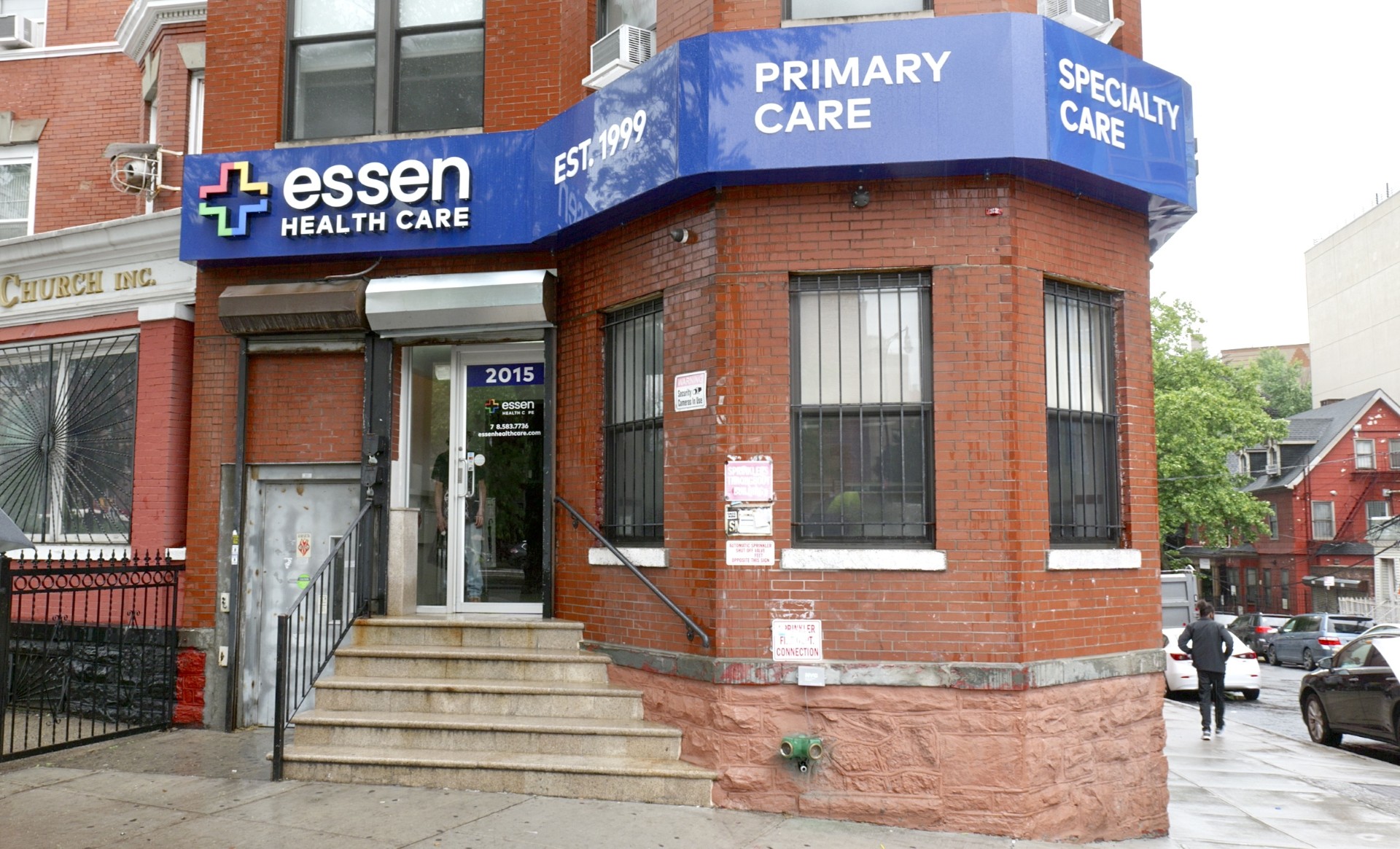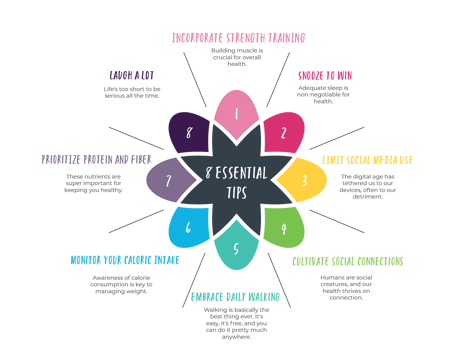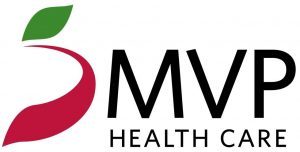This organization focuses on providing initial and continuous medical attention. It encompasses a range of services, including preventative care, acute illness management, and chronic disease management. The intent is to serve as the central point of contact for patients seeking medical advice and treatment. For example, a patient might visit this type of provider for a routine physical, management of diabetes, or treatment for a common cold.
The delivery of this type of healthcare plays a vital role in maintaining community wellness by emphasizing early detection and intervention. Regular check-ups and screenings facilitate the identification of potential health issues before they escalate into more serious conditions. Furthermore, establishing a consistent relationship with a dedicated healthcare provider encourages proactive engagement in health management and promotes healthier lifestyle choices. Historically, such services have served as the cornerstone of accessible and comprehensive healthcare delivery systems.
The subsequent sections will delve into specific aspects of accessible medical options, detailing the scope of offered services, the expertise of involved medical professionals, and the innovative approaches employed to enhance patient outcomes and overall well-being.
1. Accessibility
The ability of patients to readily obtain medical services is a cornerstone of effective healthcare delivery. Constraints on access, whether stemming from geographic limitations, financial burdens, or systemic barriers, directly impede the utilization of preventative care and the timely treatment of emergent medical conditions. Limited access increases the likelihood of delayed diagnoses, advanced disease stages, and poorer overall health outcomes. For example, communities with a scarcity of medical facilities often experience higher rates of preventable diseases due to delayed or nonexistent preventative screenings.
Geographic proximity to medical facilities, convenient appointment scheduling, and affordable care options are vital factors in ensuring accessibility. Furthermore, multilingual support and culturally sensitive practices enhance a patient’s willingness to seek necessary medical attention. Transportation assistance and telehealth services can further expand the reach of medical providers, particularly in underserved areas. Addressing financial barriers through insurance coverage, sliding scale fees, and payment plans are similarly important in allowing equitable medical access.
Ultimately, enhancing medical accessibility requires a multi-faceted approach that tackles geographic, economic, and cultural hurdles. By strategically investing in infrastructure, implementing targeted financial assistance programs, and fostering culturally competent care, the overall health and well-being of the population can be substantially improved, creating a more equitable and responsive healthcare system for all.
2. Prevention
The integration of preventative measures is a fundamental aspect of comprehensive medical attention. The primary objective is to mitigate the incidence and severity of diseases through early detection, risk factor modification, and health promotion. Without a strong emphasis on prevention, medical resources would be overwhelmed by the management of advanced-stage illnesses, leading to increased healthcare costs and diminished patient outcomes. For instance, routine screenings for hypertension and hyperlipidemia allow for early intervention through lifestyle modifications or pharmaceutical treatments, thereby reducing the likelihood of cardiovascular events such as heart attacks and strokes. Similarly, vaccinations against infectious diseases prevent widespread outbreaks and protect vulnerable populations.
Effective preventative strategies implemented within a healthcare setting involve a multifaceted approach. This includes conducting comprehensive risk assessments to identify individual susceptibilities to specific diseases, providing tailored counseling on healthy lifestyle choices such as diet and exercise, and administering recommended vaccinations and screenings according to established guidelines. Public health campaigns promoting smoking cessation, responsible alcohol consumption, and regular physical activity are also integral components of preventative healthcare. The effectiveness of these measures is substantiated by numerous studies demonstrating a reduction in morbidity and mortality rates associated with preventable diseases. For example, increased mammography screening rates have been linked to earlier detection of breast cancer and improved survival rates.
In conclusion, the emphasis on preventative medicine within medical care not only reduces individual suffering and improves overall health outcomes, but also contributes to a more sustainable and cost-effective healthcare system. Challenges remain in ensuring equitable access to preventative services across all socioeconomic groups and in addressing behavioral barriers to adopting healthier lifestyles. A continued focus on research, education, and policy initiatives aimed at promoting prevention is essential to maximizing the benefits of a comprehensive healthcare delivery model.
3. Coordination
Effective care coordination is paramount within comprehensive medical attention services. It ensures seamless transitions for patients across different healthcare settings and specialists, maximizing efficiency and minimizing potential for medical errors and redundant testing.
-
Referral Management
The efficient and timely referral of patients to specialists is a critical aspect of care coordination. This involves not only identifying the appropriate specialist based on the patient’s medical needs, but also facilitating the transfer of relevant medical records and ensuring effective communication between the attending medical professional and the specialist. Failure to properly manage referrals can lead to delays in diagnosis and treatment, as well as increased healthcare costs. For example, a patient experiencing persistent chest pain requires prompt referral to a cardiologist; a well-coordinated system ensures this happens swiftly and with complete information transfer.
-
Medication Reconciliation
Medication reconciliation aims to prevent medication errors by creating an accurate and up-to-date list of all medications a patient is taking, including prescription drugs, over-the-counter medications, and supplements. This list is then compared against any new medications prescribed to the patient, identifying and resolving any discrepancies or potential drug interactions. Such a process is especially important when patients transition between different healthcare settings, such as hospitals and outpatient clinics. For instance, upon discharge from a hospital, a patient’s medication list should be reconciled with their existing prescriptions to avoid potential adverse events.
-
Information Sharing
The secure and timely sharing of patient information among healthcare providers is essential for coordinated care. This requires the implementation of electronic health records (EHRs) and other technologies that facilitate the seamless exchange of medical data, including lab results, imaging reports, and physician notes. Effective information sharing allows providers to have a complete picture of the patient’s medical history, enabling them to make informed decisions about treatment and management. For example, a primary care physician should have access to a patient’s hospital records to understand the context of their current health conditions and avoid potentially harmful interventions.
-
Care Transitions
Coordinating care during transitions between healthcare settings, such as from a hospital to home or from one specialist to another, is critical to ensuring patient safety and preventing readmissions. This involves providing patients with clear instructions on their medications, follow-up appointments, and warning signs to watch out for. It may also involve coordinating home healthcare services or connecting patients with community resources that can support their recovery. For example, a patient discharged from a hospital after surgery may require home physical therapy and assistance with activities of daily living; a well-coordinated care transition ensures these services are in place before the patient leaves the hospital.
These coordinated efforts, while distinct, demonstrate a commitment to integrated medical services. These efforts underscore its role as a vital point of contact within the broader medical landscape, facilitating effective and well-informed care.
4. Management
In the context of medical services, effective administration is essential for ensuring operational efficiency, optimizing resource allocation, and delivering high-quality patient care. It encompasses various functions, including financial oversight, human resources administration, regulatory compliance, and strategic planning. Without sound management principles, medical practices risk financial instability, workforce shortages, and ultimately, compromised patient outcomes. For instance, a well-managed practice will implement strategies to reduce overhead costs, such as negotiating favorable contracts with suppliers, streamlining billing processes, and minimizing waste. This, in turn, frees up resources that can be invested in enhancing patient care, such as acquiring advanced medical equipment or hiring additional staff.
Effective administration plays a crucial role in ensuring that the healthcare provider complies with all applicable laws, regulations, and ethical standards. This includes implementing robust policies and procedures to protect patient privacy, prevent fraud and abuse, and ensure the safety and efficacy of medical treatments. Non-compliance can result in significant financial penalties, reputational damage, and even legal action. A practical example is implementing a comprehensive HIPAA compliance program, which involves training staff on patient privacy regulations, conducting regular risk assessments, and implementing safeguards to protect electronic health information. Successful compliance fosters trust and confidence within the community served.
The proper organization of resources and adherence to established protocols directly influences the quality of medical services provided. Strong leadership is critical for creating a culture of continuous improvement, where staff are encouraged to identify and address inefficiencies, implement best practices, and stay abreast of the latest medical advancements. In conclusion, proficient administration is not merely a logistical requirement but a fundamental pillar supporting the delivery of safe, effective, and patient-centered medical care. Its absence can lead to systemic failures with profound consequences for both the organization and the individuals it serves.
5. Continuity
The concept of uninterrupted medical care is vital within this medical structure, ensuring consistent and coordinated healthcare delivery throughout a patient’s lifespan. It fosters a strong doctor-patient relationship, which leads to improved health outcomes and patient satisfaction.
-
Longitudinal Care
Longitudinal care signifies a sustained relationship with a primary provider over an extended period. This ongoing interaction facilitates a deeper understanding of a patient’s medical history, lifestyle, and individual needs, allowing for personalized treatment plans and proactive management of chronic conditions. For example, a patient with diabetes benefits from consistent monitoring of blood glucose levels, medication adjustments, and lifestyle counseling from a provider familiar with their specific case. This consistent approach can reduce the risk of complications and hospitalizations.
-
Consistent Medical Records
Maintaining comprehensive and readily accessible medical records is crucial for continuity of care. Accurate records enable healthcare providers to make informed decisions based on a complete understanding of a patient’s past medical experiences, allergies, and current medications. A seamless transition of information is particularly important when a patient seeks care from multiple specialists or transitions between different healthcare facilities. The use of electronic health records (EHRs) facilitates this information sharing, ensuring that all relevant data is available to the appropriate providers.
-
Established Doctor-Patient Relationship
A strong and trusting relationship between the doctor and patient is a cornerstone of continuous care. It allows for open communication, shared decision-making, and increased patient engagement in their own health management. When patients feel comfortable discussing their concerns and preferences with their provider, they are more likely to adhere to treatment plans and participate in preventative care measures. This established relationship fosters a sense of partnership and mutual responsibility for achieving optimal health outcomes.
-
Reduced Fragmentation of Care
Continuity of care minimizes the fragmentation that can occur when patients receive care from multiple providers or in different healthcare settings without proper coordination. This fragmentation can lead to duplication of tests, conflicting treatment recommendations, and increased risk of medical errors. By establishing a central point of contact for all healthcare needs, this organization reduces the likelihood of fragmented care and ensures that all aspects of a patient’s health are addressed in a coordinated and comprehensive manner.
These integrated components are integral to its mission of providing comprehensive and accessible medical attention, promoting improved health outcomes and a more patient-centered healthcare experience. The emphasis on continuous care reflects a commitment to building long-term relationships with patients and supporting their health and well-being throughout their lives.
6. Comprehensiveness
A wide spectrum of medical services is a core feature in this area of medical service provision, ensuring that patients receive integrated care that addresses the majority of their health requirements under a single organizational umbrella. This broad scope seeks to minimize the fragmentation often experienced within complex healthcare systems, streamlining the patient journey and improving overall health outcomes. Comprehensiveness directly affects patient care by reducing the need to navigate multiple providers and facilities, thereby improving adherence to treatment plans and preventative care recommendations. For example, a patient requiring both chronic disease management and mental health support can access both services within the same practice, allowing for a more holistic and coordinated approach to their well-being.
The practical significance of comprehensiveness is observed in reduced hospital readmission rates and improved management of chronic conditions. An approach encompassing primary care, specialty services, and ancillary support (such as physical therapy and nutrition counseling) enables early detection and management of health issues, potentially preventing their escalation into more serious and costly conditions. Moreover, the integration of behavioral health services within medical clinics addresses the often-overlooked mental and emotional aspects of physical health, promoting a more balanced and patient-centered approach. The resulting efficiencies yield economic advantages as well, reducing administrative overhead and promoting value-based care models.
Comprehensiveness represents a pivotal aspect within this medical field, impacting access to appropriate resources, streamlined coordination, and patient-centered, improved medical outcomes. Challenges remain in ensuring uniform access to this breadth of services across diverse geographic and socioeconomic populations, as well as in maintaining seamless integration of different specialties and care modalities. Further research is needed to identify best practices in delivering comprehensive medical solutions and to address the ongoing need to adapt to evolving medical needs and technological advancements.
Frequently Asked Questions
The following questions address common inquiries regarding accessible medical attention and related services. This information aims to provide clarity and promote a better understanding of the scope and function of this critical healthcare component.
Question 1: What constitutes accessible medical attention services?
It encompasses a range of medical services focusing on preventative care, acute illness management, and chronic disease management. It serves as the initial point of contact for patients seeking medical assistance, guiding them through the healthcare system and ensuring they receive appropriate care.
Question 2: Why is continuous medical attention considered important?
Consistent medical attention allows for early detection of potential health issues and promotes a stronger doctor-patient relationship. It facilitates personalized treatment plans, improved adherence to medical advice, and better overall health outcomes.
Question 3: What measures are taken to ensure effective coordination of care?
Coordination involves efficient referral management, medication reconciliation, secure information sharing among providers, and carefully managed care transitions. These processes work to minimize errors and ensure patients receive seamless and integrated care.
Question 4: How does it address the needs of patients with chronic conditions?
The approach focuses on proactive management of chronic conditions, including regular monitoring, lifestyle counseling, and medication management. The goal is to stabilize conditions, prevent complications, and improve the patient’s overall quality of life.
Question 5: What role does prevention play within accessible medical attention?
Prevention is a core component, encompassing risk assessments, vaccinations, screenings, and health education initiatives. The focus is on identifying and addressing potential health issues before they escalate into more serious problems.
Question 6: How does this contribute to the overall well-being of the community?
By providing accessible, continuous, and comprehensive medical services, it improves individual health outcomes and contributes to a healthier and more resilient community. It promotes early detection, disease prevention, and effective management of chronic conditions.
In summary, accessible medical attention delivers an essential healthcare framework characterized by its focus on patient-centered care, disease prevention, and coordinated management of health conditions.
The subsequent section will analyze relevant statistics demonstrating its effect on society.
Essential Guidance
The following points are intended to provide clear direction for maximizing the benefits derived from medical resources. Understanding and implementing these suggestions can contribute to improved health outcomes and a more efficient healthcare experience.
Tip 1: Proactive Engagement: Schedule routine check-ups and screenings as recommended by medical professionals. Early detection of potential health issues through preventative care measures can significantly improve treatment outcomes and reduce the overall burden of illness.
Tip 2: Establish a Primary Point of Contact: Designate a consistent medical provider as the primary coordinator of healthcare services. This facilitates continuity of care, allowing for a more comprehensive understanding of an individual’s medical history and needs.
Tip 3: Maintain Accurate Medical Records: Ensure that all medical records are complete, up-to-date, and accessible to relevant healthcare providers. Accurate information sharing reduces the risk of medical errors and ensures informed decision-making.
Tip 4: Medication Adherence: Strictly adhere to prescribed medication regimens and consult with a healthcare provider before making any changes. Non-adherence can lead to serious health complications and compromise the effectiveness of treatment.
Tip 5: Lifestyle Modifications: Adopt healthy lifestyle choices, including a balanced diet, regular physical activity, and avoidance of harmful substances such as tobacco and excessive alcohol. These modifications can significantly reduce the risk of chronic diseases and improve overall health.
Tip 6: Clear Communication: Engage in open and honest communication with medical providers, clearly articulating symptoms, concerns, and preferences. This facilitates accurate diagnoses and personalized treatment plans.
Tip 7: Understand Your Insurance Coverage: Familiarize yourself with the details of insurance coverage, including copays, deductibles, and covered services. This knowledge empowers informed decision-making regarding medical expenses and access to care.
These strategies represent concrete steps individuals can take to optimize medical care and promote better health management. Adhering to these guidelines fosters proactive engagement, informed decision-making, and ultimately, improved health outcomes.
The article will now proceed to its conclusion.
essen health care primary care Conclusion
This exposition has articulated the multifaceted nature of essen health care primary care, emphasizing its role in ensuring accessibility, promoting preventative measures, coordinating complex care pathways, diligently managing resources, fostering continuity in patient relationships, and providing a wide range of comprehensive services. The integration of these core elements is paramount to the effective delivery of medical services and the overall well-being of the communities served.
The continued evolution of the medical landscape necessitates an unwavering commitment to the principles outlined herein. A sustained focus on innovation, patient-centered care models, and collaborative partnerships will be critical to navigating future challenges and realizing the full potential of essen health care primary care in promoting population health and building a more equitable healthcare system.



